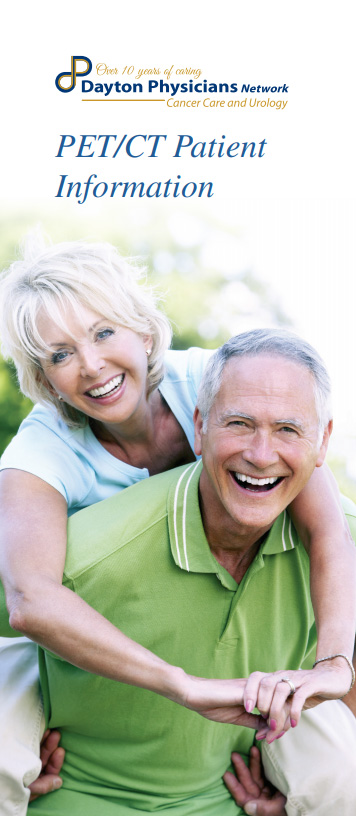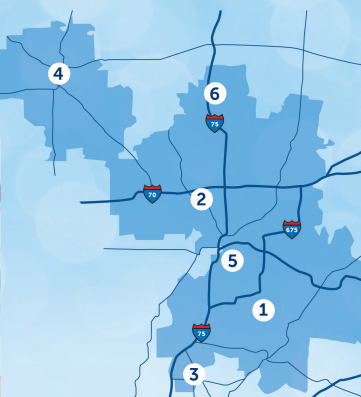Preparing For Your PET/CT Exam
There are strict preparation guidelines for all patients, especially diabetics, regarding what you can eat or drink before your exam. If you have questions regarding your preparation, contact the scheduling department for instructions.
Guidelines for all patients include:
- Do not eat or drink anything except water for 6 hours before your arrival time.
- Take your regularly scheduled medicine before arriving (if you can tolerate it on an empty stomach).
- Avoid rigorous activity for 24 hours before your exam.
- Dress warmly and comfortably.
- If you are diabetic, please call 937-771-2307. It is critical that you follow all preparation guidelines and ensure that your glucose levels are within normal limits, or the exam will need to be rescheduled.
Important: Please make every effort to keep your appointment. If you must cancel or reschedule, notify our office at least 24 hours in advance. The FDG (sugar water with radioactive tracer) used for your scan is prepared especially for you and will have to be discarded if you fail to keep your appointment.
Consult your physician prior to your PET/CT scan if:
- You are or may be pregnant.
- You are currently being treated for an infection.
- You are unsure if you should take your medications.
- You have had recent chemotherapy or radiation therapy.
- You are claustrophobic.
What Is A PET/CT Scan?
PET is an acronym for Positron Emission Tomography. PET is a test that uses special imaging cameras and a radioactive type of sugar to produce pictures of the function and metabolism of cells in the body.
CT stands for Computerized Tomography. CT is an X-ray test that generates a detailed view of the anatomy of structure of organs and tissues in the body. The CT scan can show the dimension of vessels, lymph nodes and organ systems.
A PET/CT can depict both technologies using a single machine. It provides a picture of function (PET), a picture of anatomy (CT) and a merged picture of both the body’s metabolism and structure.
What To Expect
During the exam:
You will receive small injections of FDG (sugar water with a radioactive tracer). You will sit on a comfortable chair for 60 minutes while the FDG travels throughout your body.
After this time, the technologist will assist you to the scanner. The CT portion of the exam is completed first, followed by the PET portion.
It is important that you don’t move for the duration of the exam. The length of the exam is determined by your height and area of the body being scanned. When the total scan is finished, the computers will produce images for the radiologist to review.
PET/CT scans offer greater peace of mind for patients and their families.

After the exam:
Once the total scan has been performed, you may resume daily activity. Even though the FDG will quickly leave your body, you can expedite the process by drinking plenty of water after your scan is complete.
The radiologist will contact your physician to communicate all pertinent information from your scan. Then your physician will contact you to share the results.
Benefits of PET/CT
PET/CT helps physicians diagnose, stage and treat cancer with more accuracy than ever before. The exam can provide answers to the following critical questions:
- Where is the tumor?
- Is it spreading?
- What is the size of the tumor?
- Is therapy working?
Other potential benefits include:
- Improves diagnostic confidence for patients who have or may have cancer.
- Reduces the need for invasive procedures, like biopsy or surgery.
- Helps avoid the wait and see method, often used to monitor potential disease.
- Monitors patient’s response to treatment to ensure the treatment is working.
Two convenient locations near you…
1. Kettering – Greater Dayton Cancer Center
2. Englewood – Miami Valley Hospital North.
If you are unable to keep your appointment, please call 937-771-2307 to reschedule.


Vision: To be the BEST PLACE FOR CARE
Mission: Exceed Expectations
- Quality of Care
- Scope of Service
- Compassion
- Timeliness
- Cost Effectiveness
 937-293-1622
937-293-1622 Find a Location Near You
Find a Location Near You



